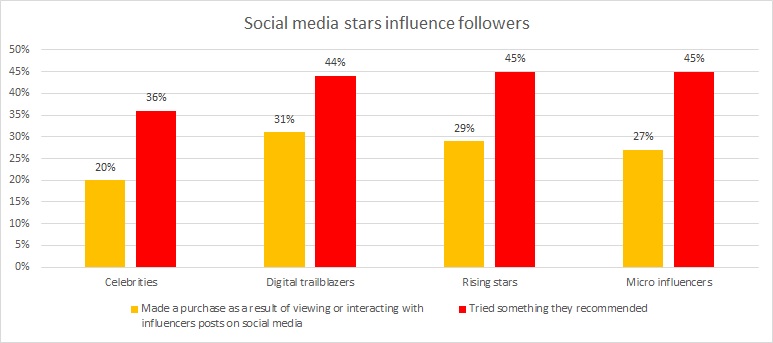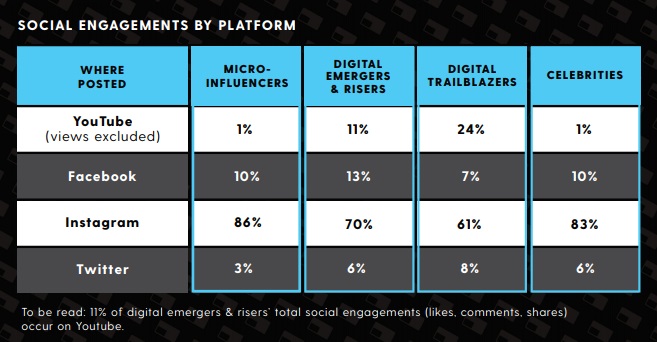Digital influencers have become a major force in online marketing in recent years. Brands turn to celebrities and other influencers to engage audiences and sway purchase decisions in influencer marketing campaigns. A new study by Fullscreen and Shareablee shows that these social media influencers have a strong impact on their followers’ behaviour.
The study looks at four levels of digital stars:
- Celebrities – 20 million followers or more
- Trailblazers – online stars with 1 million or more followers
- Emerging voices and rising stars – digital creators with 250k – 999k followers
- Micro influencers – social media stars with less than 250k followers
Young people are influenced by social media stars
In the study, consumers aged 18-34 were asked whether they had taken any action as a result of seeing social media posts from digital influencers. Not surprising, many of them had and it turned out that celebrities were least effective in swaying consumer behaviour.
Micro influencers and “rising stars” are most effective in getting consumers to try one of their recommendations. As many as 45% of consumers report that they had done that.
“Digital trailblazers” are very effective at getting followers to purchase an item that they talked about in social media. Influencers with less than a million followers are almost as effective, while one in five consumers report that they had made a purchase as a result of a celebrity post.
Instagram creates most engagement for influencers
Among the social platforms that digital influencers use (Snapchat not included), Instagram creates the most engagement. This is especially true for micro influencers who see 86% of total engagement take place on Instagram.
That doesn’t mean, of course, that for example Youtube is not important. For many influencers, Youtube generates millions of views, so it all depends on how you define engagement. Also, I would have liked to see how much blogs affect consumer behaviour. At least in Sweden, many high profile bloggers generate massive sales for brands in campaigns that include a combination of blogs, Instagram and Youtube.
To read the entire report, please click here.


